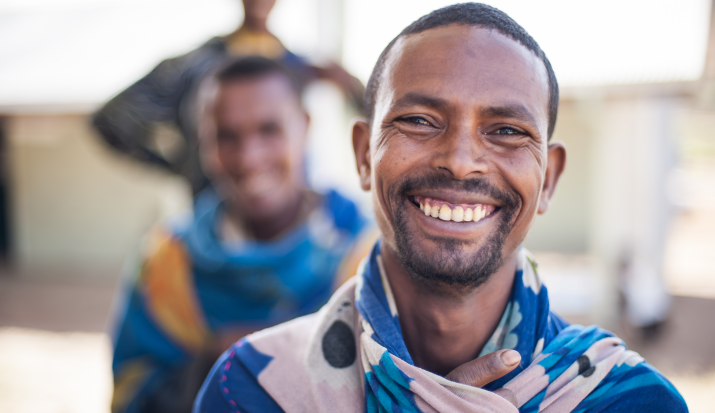Ridding the World of TB: Stories from Bangladesh and Ethiopia
Ridding the World of TB: Stories from Bangladesh and Ethiopia

Tuberculosis remains the world’s leading infectious disease killer, claiming 4,500 lives each day. Every year, some 558,000 people will develop a form of TB that is resistant to rifampicin, the most effective first-line drug, making successful treatment of the disease even more difficult and costly.
Ending the global epidemic requires a comprehensive approach, rapid innovation and proven interventions, bold leadership, and intensive community engagement.
MSH works with local partners to develop health systems solutions that meet the needs of communities affected by TB. Below is a collection of stories from USAID’s Challenge TB project that inspire us to continue the hard work of finding, treating, and improving the lives of those suffering from TB.
![[After seeing a leaflet in their mosque advertising the clinic’s services, Mahmud brought his brother to be tested for TB.]](https://msh.org/wp-content/uploads/2019/03/after_seeing_a_leaflet_in_their_mosque_advertising_the_clinics_services_mahmud_brought_his_brother_to_be_tested_for_tb.715px.png)
TB Care in the Heart of the City
Bringing TB diagnosis and treatment to a city like Dhaka is no simple task. It is huge and densely populated, with nearly 20 million residents, and throughout Bangladesh, an estimated 120,000 people with TB remained undiagnosed in 2017. In addition to government health facilities, Challenge TB is working with the International Centre for Diarrhoeal Disease Research, Bangladesh, to find missing cases of TB through two state-of-the-art TB clinics in the city. The aim is to bring TB diagnosis and care closer to the heart of the city. Read the full story
![[A diabetic for 25 years, Minara was diagnosed and started treatment for TB.]](https://msh.org/wp-content/uploads/2019/03/a_diabetic_for_25_years_minara_was_diagnosed_and_started_treatment_for_tb.715px.png)
Two Epidemics Collide
The number of people with diabetes is increasing worldwide, with the most dramatic increase in low- and middle-income countries. Diabetes triples the risk of TB and can worsen its effects, causing problems with controlling blood sugar levels. Rising rates of diabetes-associated TB threaten progress made in the global fight against the disease. Challenge TB is confronting TB and diabetes by introducing comprehensive guidelines on the care and treatment of both diseases and by implementing a series of publicity campaigns to highlight the symptoms and problems each one brings. Read the full story
![[Delays in TB case detection and initiation of treatment and a lack of follow-up services are common at the traditional mining sites.]](https://msh.org/wp-content/uploads/2019/03/delays_in_tb_case_detection_and_initiation_of_treatment_and_a_lack_of_follow-up_services_are_common_at_the_traditional_mining_sites.715px.png)
Fighting TB among Remote Mining Workers and their Families
Mustafa is an Ethiopian gold miner who survived TB, but after getting the treatment he needed his father developed symptoms. Mustafa learned how to evaluate other members of his family, three of whom were diagnosed with TB and began treatment. When Mustafa’s father became too ill to travel to the health center, Mustafa took over managing his TB treatment at home. Read the full story

Toddler Beats Drug-Resistant TB
Rahat was exposed to the disease when his grandfather fell ill. The first signs of trouble came when Rahat, a normally happy baby, stopped smiling. He lost the usual playfulness of a healthy child, rapidly lost weight, and developed a large swelling on the side of his neck. At only 7 months of age, he was diagnosed with TB. When the initial course of treatment failed to improve his condition, his parents took him back to the hospital, where a team of experts trained in a new rapid diagnostic technology confirmed that he was suffering from drug-resistant TB. Read the full story